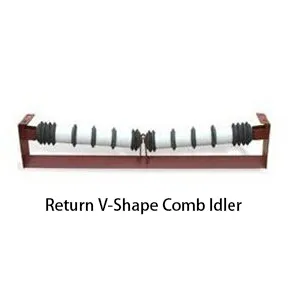 Afrikaans
Afrikaans  Albanian
Albanian  Amharic
Amharic  Arabic
Arabic  Armenian
Armenian  Azerbaijani
Azerbaijani  Basque
Basque  Belarusian
Belarusian  Bengali
Bengali  Bosnian
Bosnian  Bulgarian
Bulgarian  Catalan
Catalan  Cebuano
Cebuano  Corsican
Corsican  Croatian
Croatian  Czech
Czech  Danish
Danish  Dutch
Dutch  English
English  Esperanto
Esperanto  Estonian
Estonian  Finnish
Finnish  French
French  Frisian
Frisian  Galician
Galician  Georgian
Georgian  German
German  Greek
Greek  Gujarati
Gujarati  Haitian Creole
Haitian Creole  hausa
hausa  hawaiian
hawaiian  Hebrew
Hebrew  Hindi
Hindi  Miao
Miao  Hungarian
Hungarian  Icelandic
Icelandic  igbo
igbo  Indonesian
Indonesian  irish
irish  Italian
Italian  Japanese
Japanese  Javanese
Javanese  Kannada
Kannada  kazakh
kazakh  Khmer
Khmer  Rwandese
Rwandese  Korean
Korean  Kurdish
Kurdish  Kyrgyz
Kyrgyz  Lao
Lao  Latin
Latin  Latvian
Latvian  Lithuanian
Lithuanian  Luxembourgish
Luxembourgish  Macedonian
Macedonian  Malgashi
Malgashi  Malay
Malay  Malayalam
Malayalam  Maltese
Maltese  Maori
Maori  Marathi
Marathi  Mongolian
Mongolian  Myanmar
Myanmar  Nepali
Nepali  Norwegian
Norwegian  Norwegian
Norwegian  Occitan
Occitan  Pashto
Pashto  Persian
Persian  Polish
Polish  Portuguese
Portuguese  Punjabi
Punjabi  Romanian
Romanian  Russian
Russian  Samoan
Samoan  Scottish Gaelic
Scottish Gaelic  Serbian
Serbian  Sesotho
Sesotho  Shona
Shona  Sindhi
Sindhi  Sinhala
Sinhala  Slovak
Slovak  Slovenian
Slovenian  Somali
Somali  Spanish
Spanish  Sundanese
Sundanese  Swahili
Swahili  Swedish
Swedish  Tagalog
Tagalog  Tajik
Tajik  Tamil
Tamil  Tatar
Tatar  Telugu
Telugu  Thai
Thai  Turkish
Turkish  Turkmen
Turkmen  Ukrainian
Ukrainian  Urdu
Urdu  Uighur
Uighur  Uzbek
Uzbek  Vietnamese
Vietnamese  Welsh
Welsh  Bantu
Bantu  Yiddish
Yiddish  Yoruba
Yoruba  Zulu
Zulu friction drive pulley
Friction Drive Pulley An Innovative Mechanism for Power Transmission
Friction drive pulleys have emerged as a crucial component in various mechanical systems due to their unique method of power transmission. Unlike traditional belt systems that rely on grooves and teeth, friction drive pulleys operate on the principle of friction between two surfaces—offering several advantages in terms of design, efficiency, and adaptability.
Understanding the Mechanics of Friction Drive Pulleys
At its core, a friction drive pulley consists of two main components the driving pulley and the driven pulley. The driving pulley is connected to a power source, such as a motor, while the driven pulley is attached to the load. Instead of using a belt or chain to transfer motion, these pulleys rely on the frictional force generated between them. The driving pulley exerts pressure against the driven pulley, allowing for seamless energy transfer when the driving pulley rotates.
The frictional force is influenced by several factors, including the materials used in the pulley construction, the surface texture, and the applied pressure. Common materials include rubber, plastic, and metal composites, each chosen based on specific requirements such as durability, weight, and cost. The adjustable nature of friction drive pulleys allows them to adapt to varying loads and operational conditions effectively.
Advantages of Friction Drive Pulleys
1. Simplicity in Design One of the primary advantages of friction drive pulleys is their simplified design. They do not require complex alignments or additional components, such as belts or chains, making them less prone to mechanical failure. This simplicity can also lead to lower manufacturing costs and easier maintenance.
2. Reduced Wear and Tear Traditional power transmission systems can suffer from excessive wear due to the repetitive engagement and disengagement of belts and chains. In contrast, friction drive pulleys experience uniform pressure distribution, leading to less localized wear and extending the lifespan of the components.
friction drive pulley

3. Higher Efficiency The direct contact mechanism of friction drive pulleys allows for more efficient power transmission, often exceeding the efficiency of traditional systems. This efficiency results in lower energy consumption, which is increasingly important in industries looking to reduce operational costs and environmental impact.
4. Versatility Friction drive pulleys can be employed in various applications, ranging from small electronic devices to heavy industrial machinery. Their adaptability makes them suitable for diverse environments, including automotive systems, conveyor belts, and even elevator systems.
5. Smooth Operation Due to the absence of moving parts, friction drive pulleys operate more smoothly, reducing vibration and noise. This feature enhances user comfort and helps maintain the integrity of sensitive equipment and materials.
Applications Across Industries
The applications of friction drive pulleys are vast, covering multiple sectors such as automotive, manufacturing, and consumer electronics. In the automotive industry, they are utilized in power steering systems and automatic transmissions, where smooth and responsive power transfer is essential. In manufacturing, friction drive pulleys are common in conveyor systems, allowing goods to move efficiently through production lines. Additionally, consumer electronics can benefit from their compact design, making them ideal for small devices that require effective motion transfer without excessive bulk.
Conclusion
In summary, friction drive pulleys represent a significant advancement in power transmission technology. By harnessing the power of friction, these pulleys provide a robust, efficient, and versatile solution for a wide range of applications. As industries continue to seek innovative ways to enhance performance and reduce costs, the adoption of friction drive pulleys is likely to grow, driving the development of even more sophisticated mechanical systems. Whether in a factory, a vehicle, or a home appliance, friction drive pulleys are poised to play an indispensable role in the future of mechanical engineering.
-
Revolutionizing Conveyor Reliability with Advanced Rubber Lagging PulleysNewsJul.22,2025
-
Powering Precision and Durability with Expert Manufacturers of Conveyor ComponentsNewsJul.22,2025
-
Optimizing Conveyor Systems with Advanced Conveyor AccessoriesNewsJul.22,2025
-
Maximize Conveyor Efficiency with Quality Conveyor Idler PulleysNewsJul.22,2025
-
Future-Proof Your Conveyor System with High-Performance Polyurethane RollerNewsJul.22,2025
-
Driving Efficiency Forward with Quality Idlers and RollersNewsJul.22,2025





























